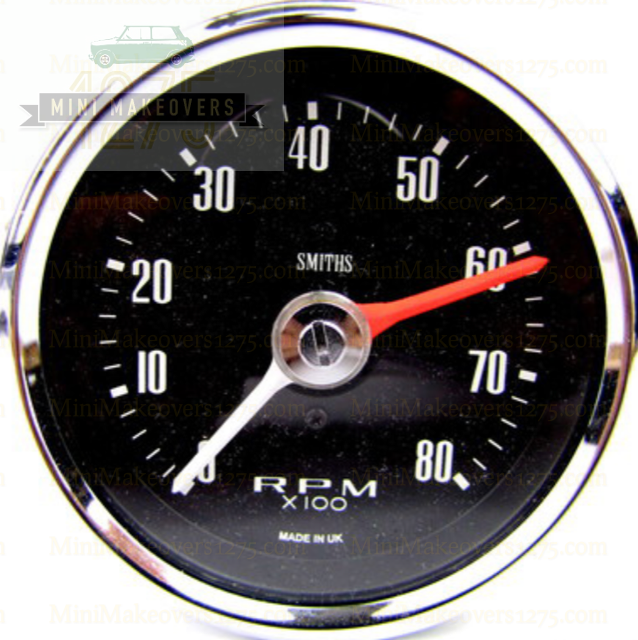Tachometer Buying Guide: Attributes to Search For and Ideal Brands
Tachometer Buying Guide: Attributes to Search For and Ideal Brands
Blog Article
The Value of a Tachometer in Keeping An Eye On Engine Rate and Efficiency in Automotive Applications
In the realm of auto engineering, the tachometer stands as an essential instrument in the motorist's arsenal, supplying a straight home window into the internal workings of a car's engine. Beyond its feature as a simple scale of changes per min (RPM), the tachometer offers as an important tool for enthusiasts and professionals alike, offering real-time insights right into engine performance and health and wellness.
Value of Keeping An Eye On Engine RPM
Keeping an eye on engine RPM, or transformations per min, is an essential facet of automobile maintenance and efficiency analysis. Engine RPM straight associates with the rate at which the engine's crankshaft turns, suggesting how quickly the engine is running.
Furthermore, keeping an eye on engine RPM is necessary for performance examination in auto racing and high-performance cars. In summary, keeping track of engine RPM is not only vital for discovering problems but additionally for enhancing engine performance in numerous auto applications.

Benefits of Real-Time Data
In automotive applications, real-time information plays an essential role in providing immediate understandings right into the performance and problem of the automobile. By constantly monitoring different specifications such as engine rate, temperature, gas consumption, and a lot more, real-time data provides various advantages that add to enhanced effectiveness and security on the roadway.
One considerable advantage of real-time information is its capability to alert motorists and service technicians to any anomalies or issues immediately. This aggressive technique enables quick recognition of potential issues, permitting timely treatments to protect against further damage or breakdowns. Additionally, real-time information promotes performance optimization by giving prompt feedback on driving routines and engine performance. Vehicle drivers can adjust their behavior in real-time based upon this details to attain much better fuel economic situation and lengthen the life-span of their car.

Moreover, real-time information plays a crucial function in modern-day vehicle diagnostics, making it possible for professionals to promptly identify and address malfunctions. This leads to minimized downtime, reduced upkeep costs, and eventually, improved general car integrity and longevity (tachometer). By utilizing the power of real-time data, automobile stakeholders can make informed decisions that favorably influence both the efficiency and durability of the automobile
Effect On Gear Shifts
Reliable gear shifts in auto applications substantially affect general efficiency and driving experience. The tachometer plays an essential duty in optimizing equipment changes by offering real-time engine rate anchor information to the motorist. When coming close to the redline on the tachometer, it signifies the vehicle driver to upshift to avoid over-revving the engine and creating possible damage. On the other hand, downshifting at the best moment can help maintain the engine in its power band, guaranteeing receptive velocity when needed.
Moreover, the tachometer aids in accomplishing smoother equipment transitions, specifically in hands-on transmissions. By monitoring engine rate, chauffeurs can implement gear changes at the ideal RPM range, decreasing jerking activities and lessening endure the transmission components. This precision in gear modifications not only enhances driving convenience yet additionally adds to fuel effectiveness.
Enhancing Gas Efficiency
Offered the essential duty the tachometer plays in optimizing gear shifts for efficiency and engine health, it directly adds to making the most of fuel efficiency in auto applications. By providing real-time feedback on engine rate, the tachometer helps motorists in preserving the why not find out more most effective RPM array for gas economic situation. When drivers regularly keep track of the tachometer and readjust their driving routines accordingly, they can avoid unnecessary fuel usage brought on by her latest blog over-revving or carrying the engine.
In addition, the tachometer helps vehicle drivers identify the most fuel-efficient gear to be in at any kind of given minute, stopping the engine from working more challenging than required. In conclusion, the tachometer serves as a valuable tool in enhancing gas performance by advertising optimum driving habits and identifying locations for renovation in the vehicle's efficiency.

Making The Most Of Engine Durability
The tachometer's function in keeping an eye on engine speed and performance is crucial in making certain the longevity of automobile engines. Monitoring the tachometer permits motorists to stay within the advised RPM variety for their automobile, stopping unneeded pressure on the engine and extending its life expectancy.

Verdict
In conclusion, the tachometer plays an essential role in keeping an eye on engine speed and performance in auto applications. By supplying real-time information on RPM, it enables for reliable equipment shifts, improved fuel performance, and maximized engine longevity. This tool is essential for preserving optimal engine performance and making sure the overall capability of a lorry.
Report this page